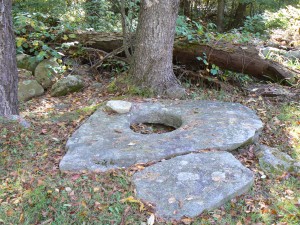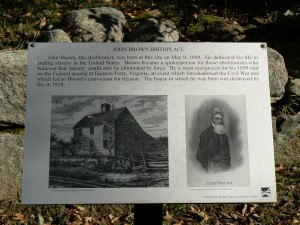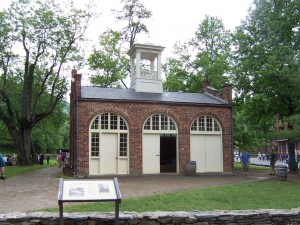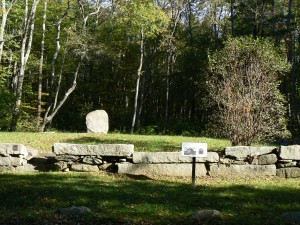 On the 150th anniversary of abolitionist John Brown’s raid on a Federal armory in Harpers Ferry, we’re taking a look at the Torrington site of his birthplace.
On the 150th anniversary of abolitionist John Brown’s raid on a Federal armory in Harpers Ferry, we’re taking a look at the Torrington site of his birthplace.
Brown was born in 1800 on what is now John Brown Road. The site, listed on Connecticut’s Freedom Trail, today consists of a small roadside clearing surrounded by a stone wall. A boulder, erected in 1932, has an inscription on its south side reading, “In a house on this site, John Brown was born May 9, 1800.”
The site also has a wayside marker explaining the homestead was destroyed in a fire in 1918. Within the clearing, there are few signs of the former house, other than a large boulder at the eastern end of the property with a round hole that appears to have been part of a well or cistern.
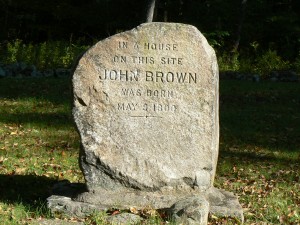 The Brown family moved to Ohio in 1805. Brown moved to Massachusetts in 1816 before returning to Litchfield to study to become a minister. Eye inflammation and a lack of money prompted his return to Ohio.
The Brown family moved to Ohio in 1805. Brown moved to Massachusetts in 1816 before returning to Litchfield to study to become a minister. Eye inflammation and a lack of money prompted his return to Ohio.
In 1856, Brown and his followers killed five pro-slavery Southerners, one of several violent incidents that year in Kansas as supporters and opponents debated whether slavery would be allowed there.
During the Harpers Ferry attack in 1859, Brown led an army of followers who tried to seize the Federal armory in hopes of using the weapons to instigate a slave rebellion. Most of the attackers were killed or captured, and Brown was eventually surrounded in the armory’s engine house. After a standoff, U.S. troops led by Robert E. Lee stormed the engine house and captured Brown, who was convicted of treason and hanged on December 2, 1859. He was buried in North Elba, N.Y.
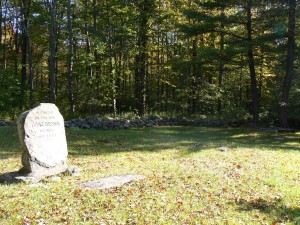 Brown’s raid, trial and execution helped further inflame the slavery debate that would lead to the Civil War. Less than a year later, South Carolina would become the first state to secede from the United States, and the first battle would take place 14 months later.
Brown’s raid, trial and execution helped further inflame the slavery debate that would lead to the Civil War. Less than a year later, South Carolina would become the first state to secede from the United States, and the first battle would take place 14 months later.
The images of Harpers Ferry are from a visit in 2005. After John Brown’s raid, the engine house became a tourist attraction, and was displayed at a Chicago fair in the 1890s. The building was returned to Harper’s Ferry and displayed on a local farm, and then a college campus. In 1968, the National Park Service returned the building to a site near its original location, which had been covered by a railroad embankment.
A granite monument marks the actual location of the engine house during Brown’s raid.
Sources: Torrington Historical Society
National Park Service: Harpers Ferry
